Week 1 of the NFL season is almost in the books, with just two games left to be played on Monday Night Football. The action from Sunday's slate has already provided us with enough new information to start considering fantasy football roster management as we head into Week 2.
So let's dig into Sunday's action with an eye for fantasy implications. I'll hit on snap counts, routes run, red-zone carries, targets and target shares to make sure we're ready to roll as waiver deadlines approach and Week 2 sit/start decisions loom. Consider this a crash course on Week 1.
Buffalo Bills 27, New York Jets 17
It’s been a long road for quarterback Josh Allen, but he finally surpassed the 300-yard passing yardage mark. He did it against a porous New York Jets defense that should be targeted all season long by fantasy managers and their quarterbacks. They host the San Francisco 49ers in Week 2.
Both Devin Singletary and Zack Moss saw nine carries on Sunday, but Singletary didn’t establish himself as the lead back by any means, averaging just 3.3 yards per attempt. That was better than Moss (1.2), but five of the rookie's carries came inside the 10-yard line, hurting his rushing average but demonstrating the TD upside we expected.
Sam Darnold seems only comfortable throwing the ball to either Jamison Crowder (13 targets) or Chris Herndon (seven), who combined for 20 targets in Week 1. Herndon only finished with 37 yards, but his usage and performance in a difficult matchup is extremely promising.
Green Bay Packers 43, Minnesota Vikings 34
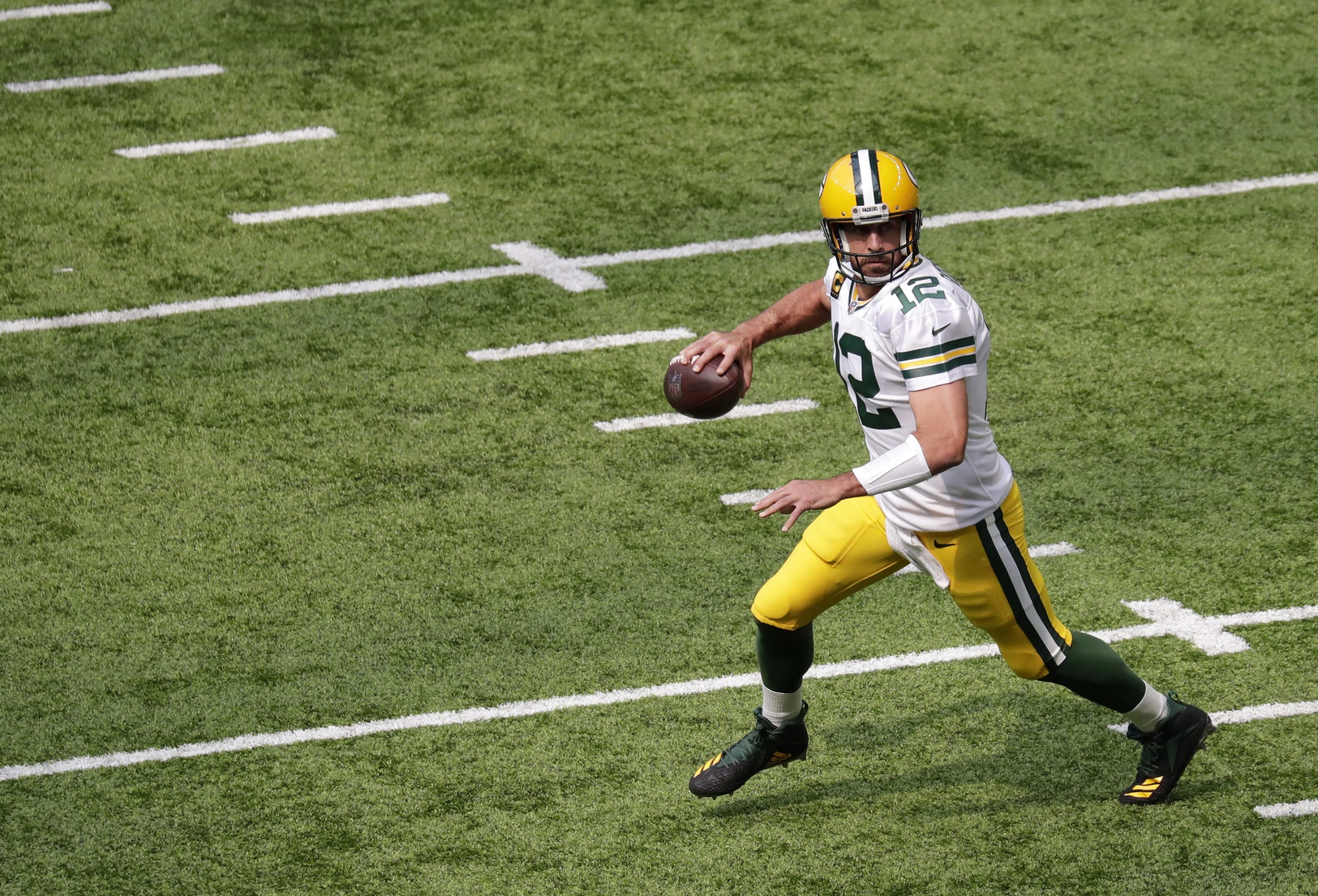
A.J. Dillon was nowhere to be found near the goal line, with Aaron Jones leading the team with seven carries inside the 10-yard line. Jones also tied Allen Lazard for the second-most targets on the team (six) behind Davante Adams (17), who had a monster day. Adams finished as the highest-scoring wide receiver on the main slate with over 30 fantasy points on the back of 17 targets from Aaron Rodgers.
I've mentioned in previous articles that the Vikings’ defense was likely to regress in 2020. If their Week 1 play was any indication, we should no longer fear the Minnesota matchup. Their next game is against the Tennessee Titans, so watch out for a big game from A.J. Brown.
The Vikings defense taking a step back is not necessarily bad for fantasy — it will force the team to throw more, resulting in more Adam Thielen 100-yard games.
It was noteworthy that Alexander Mattison and Dalvin Cook saw almost equal snaps in the passing game, and Mattison finished with four targets — two more than Cook. Their overall touch distribution was Cook 13, Mattison 10.
Washington Football Team 27, Philadelphia Eagles 17
Peyton Barber looks to be the goal-line back in Washington. He had seven rushing attempts inside the 10-yard line and converted two into touchdowns. Antonio Gibson only had one touch inside the 10.
To make matters worse for Gibson-truthers (like myself), he ran only eight routes vs. J.D. McKissic’s 22 routes. This type of volume is not going to warrant starting Gibson as an RB2 — his appeal is as a pass-catching running back.
Tight end Logan Thomas led Washington in targets (eight) and is sure to be a hot waiver wire add this week. DeSean Jackson failed to live up to his hype entering Week 1, finishing with just two catches for 46 yards, but the entire Eagles offense was a huge disappointment. Carson Wentz saw pressure on 40% of his dropbacks and took eight sacks. His aDOT (12.3) was the highest among all quarterbacks, which could have been a contributing factor to the sacks continuing to pile up.
The Washington Football Team’s defensive line cannot be overlooked. Until we see the Eagles’ offensive line get healthy, we can’t just assume Miles Sanders’ will be a locked-and-loaded RB1 when he returns, considering Boston Scott’s Week 1 performance (nine carries for 35 yards, two catches for 19).
Baltimore Ravens 38, Cleveland Browns 6
Baker Mayfield led all quarterbacks in air yard percentage (85.7%) in Week 1, perhaps an indication that there are some positive fantasy days in his future. Air yards are usually a good projector of future success, so even though Mayfield was a disaster against a stout Baltimore Ravens defense, don’t write him off just yet with the Bengals next on the schedule.
The talk of the offseason was that Lamar Jackson was working more on his deep ball, and he showed those improvements in Week 1. His yards per attempt (11.0) and aDOT (10.7) ranked second and sixth on the week, respectively. Over half of Marquise Brown’s receptions ended up resulting in gains of 15-plus yards.
J.K. Dobbins dominated the box score with two touchdown scores, but Mark Ingram II still led all running backs in carries while Dobbins was the main back on pass plays. It’s shaping up to be a true 50-50 committee.
Jacksonville Jaguars 27, Indianapolis Colts 20
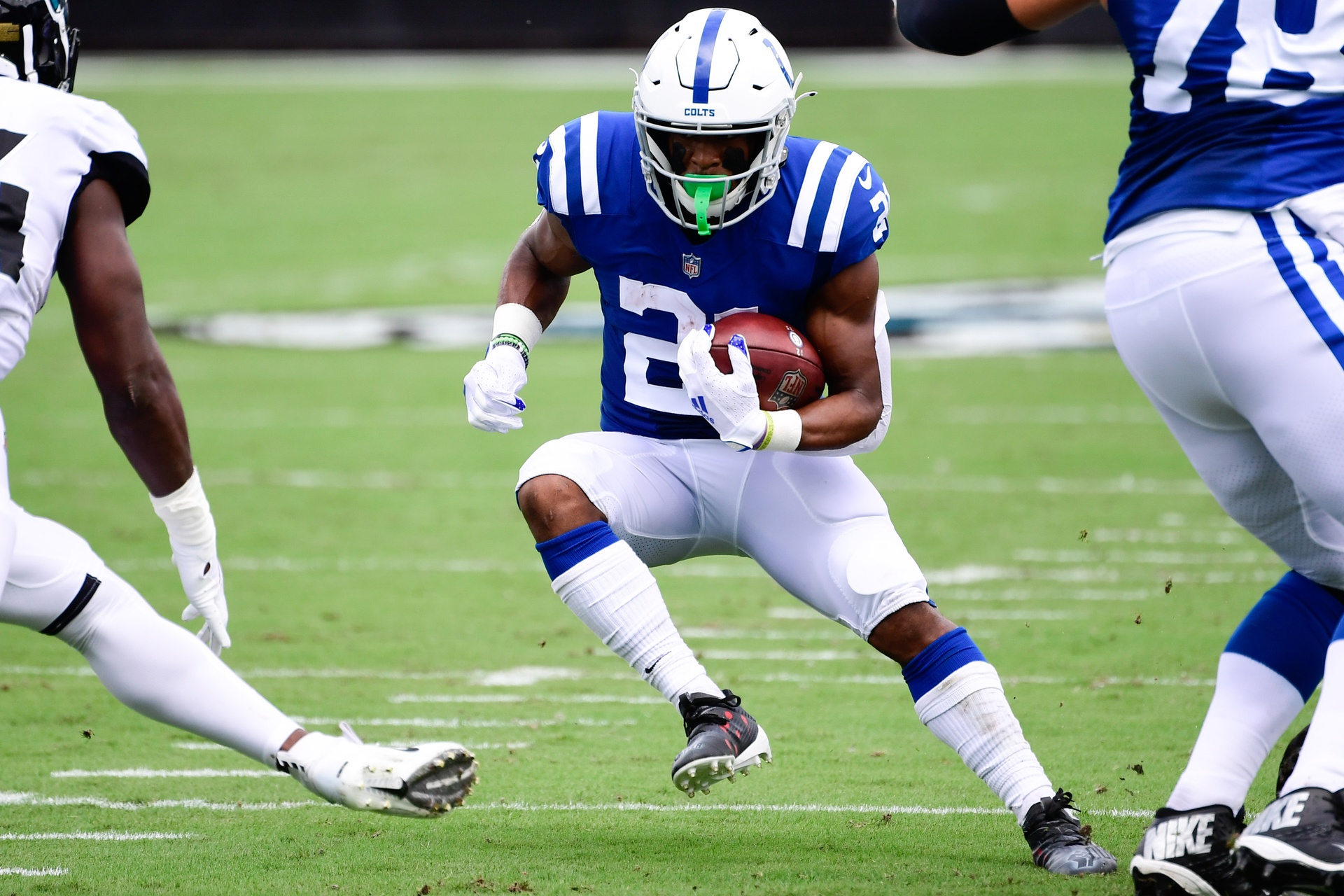
Marlon Mack suffered a torn Achilles in Week 1, so the immediate outlook for Nyheim Hines and Jonathan Taylor has drastically changed. Taylor will be the main running back moving forward, but that’s not to say Hines can’t also be fantasy relevant.
In Week 1, Hines edged out Taylor in total offensive snaps (38 vs. 27) and carries inside the 20 (four vs. two) while both saw two targets. They had six and seven catches apiece and Taylor finished second on the team in receiving yards behind Parris Campbell (67 vs. 71). It seems like as long as quarterback Philip Rivers is under center, the running backs are going to see targets in the passing game regardless.
D.J. Chark Jr. would have been a massive bust had it not been for a touchdown, but he still led the team in routes run, so I'm not concerned that either Keelan Cole or Laviska Shenault Jr. will dethrone him as the alpha — although I would be aggressively targeting Shenault off the waiver wire for Week 2.
Rookie James Robinson also appears to be a legit three-down back after toting the rock for 16 carries for 62 yards and seeing almost the same usage as Chris Thompson in the passing game.
Las Vegas Raiders 34, Carolina Panthers 30
There’s only one major takeaway here: Josh Jacobs smashed in fantasy and was involved in the passing game. Aside from his three rushing touchdowns, Jacobs was second on the team in receptions and, per usual, forced a missed tackle on two of them. His routes run (18) total was immensely higher than either Jalen Richard (two) or Devontae Booker (three).
Christian McCaffrey may not be peppered with targets at the same rate he was last season. He had just four targets in Week 1, with only one coming in the first half. This isn't time to panic, as McCaffrey did have four games last season when he saw four or fewer targets, but his usage needs to be monitored.
Chicago Bears 27, Detroit Lions 23
Mitchell Trubisky led the Bears to a comeback win on the back of 242 passing yards, three touchdown passes and a just a little help from a D’Andre Swift drop. One of his touchdowns went to Anthony Miller, but the young receiver is still seeing limited snaps. Miller played fewer snaps than Ted Ginn Jr. and just a few more than Javon Wims.
The Detroit Lions lost two of their top defensive backs in this game — Justin Coleman and Desmond Trufant — and they were already without first-round pick Jeffrey Okudah. Should these players remain limited for Week 2, Aaron Rodgers and Co. could be in for another big passing day.
Adrian Peterson led the Lions in rushing yards (93), further muddying this backfield. Swift played the most snaps (34), compared to 24 for Peterson and 20 for Kerryon Johnson. But Swift only had three carries, so the majority of his work came as a receiver.
Seattle Seahawks 38, Atlanta Falcons 25
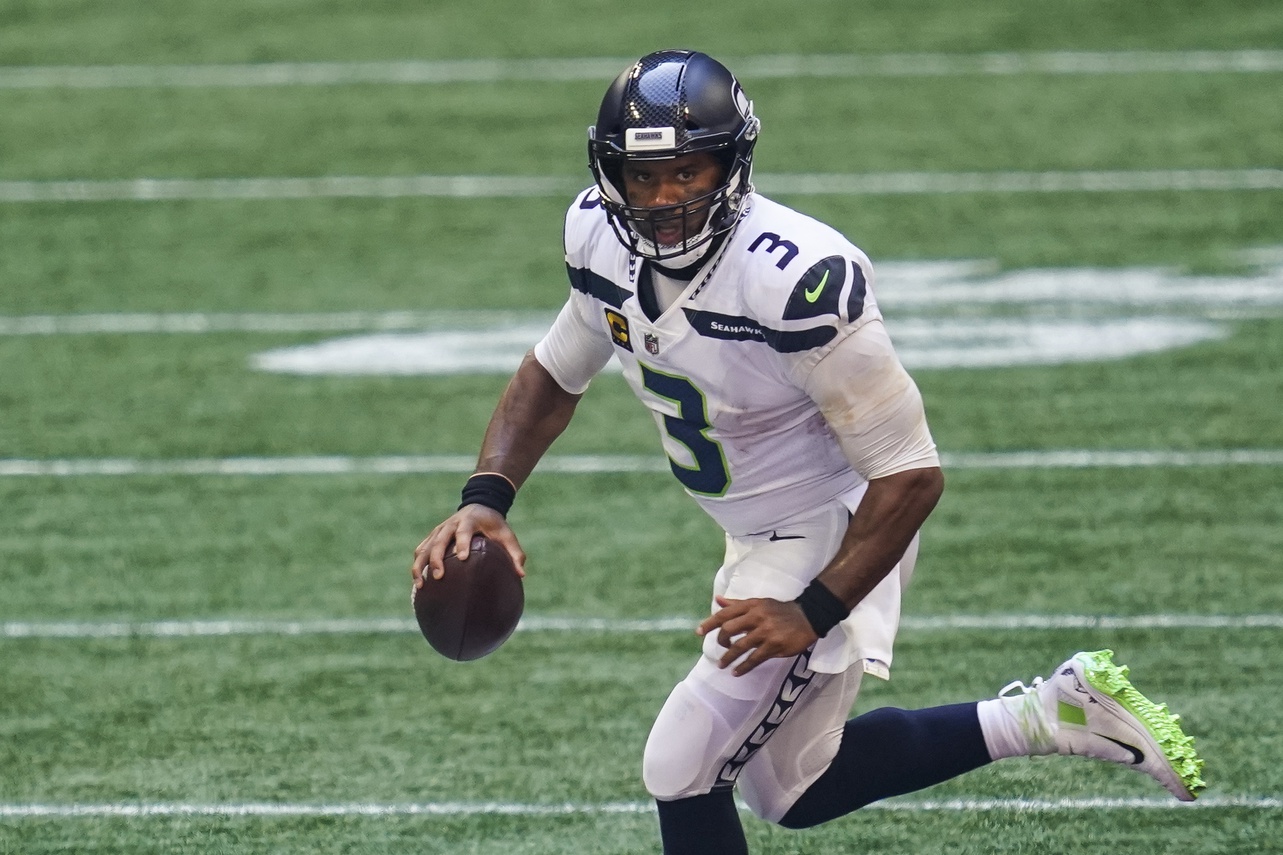
The Seattle Seahawks finally #LetRussCook, allowing the quarterback to unleash his ability on the porous Atlanta Falcons. Russell Wilson finished as the QB1 overall, throwing for 322 yards and four touchdowns.
Running back Chris Carson rushed for just 21 yards on six carries, but his fantasy production exploded due to six targets and catches for 45 yards and two touchdowns. Be warned though that Carlos Hyde had seven carries.
Matt Ryan was pressured on just 5.6% of his dropbacks in Week 1. In a clean pocket, Ryan threw 392 of his 450 yards and tossed both of his touchdowns to Calvin Ridley.
Despite running almost the same number of routes as wide receivers Ridley, Julio Jones and Russell Gage, tight end Hayden Hurst disappointed with just three catches for 38 yards.
New England Patriots 21, Miami Dolphins 11
Cam Newton rushed the ball 15 times for 75 yards in his first game with the New England Patriots. His adjusted completion percentage (93.8%) ranked in the top five among quarterbacks for Week 1. The Patriots ran the ball on 63.5% of their plays, by far the highest on the week.
Wide receiver Isaiah Ford ran more routes from the slot than tight end Mike Gesicki, and second-year running back Myles Gaskin played more offensive snaps (39) than Matt Breida (14) and Jordan Howard (9) combined. Gaskin also led the team in receptions (four) and rushing yards (40).
Los Angeles Chargers 16, Cincinnati Bengals 13
Running back Justin Jackson left with an injury, making room for rookie Joshua Kelley to make some noise in his debut. He had 12 carries for 60 yards and was particularly impressive shedding tacklers ,averaging 4.3 yards after contact per attempt and seeing goal-line work.
Austin Ekeler was also productive as a rusher but only saw one target in the passing game from Tyrod Taylor. This was not due to lack of routes, as Ekeler’ s 22 routes run were right on par with his average (24.5) from the first four weeks of 2019.
A.J. Green led the Bengals in targets (nine) but only hauled in five of them for 51 yards. He finished the game behind both John Ross and Tyler Boyd in routes run.
Joe Burrow’s “sneaky upside” was on full display when he rushed for 41 yards and one touchdown on eight rushing attempts (four were scrambles).
Arizona Cardinals 24, San Francisco 49ers 20
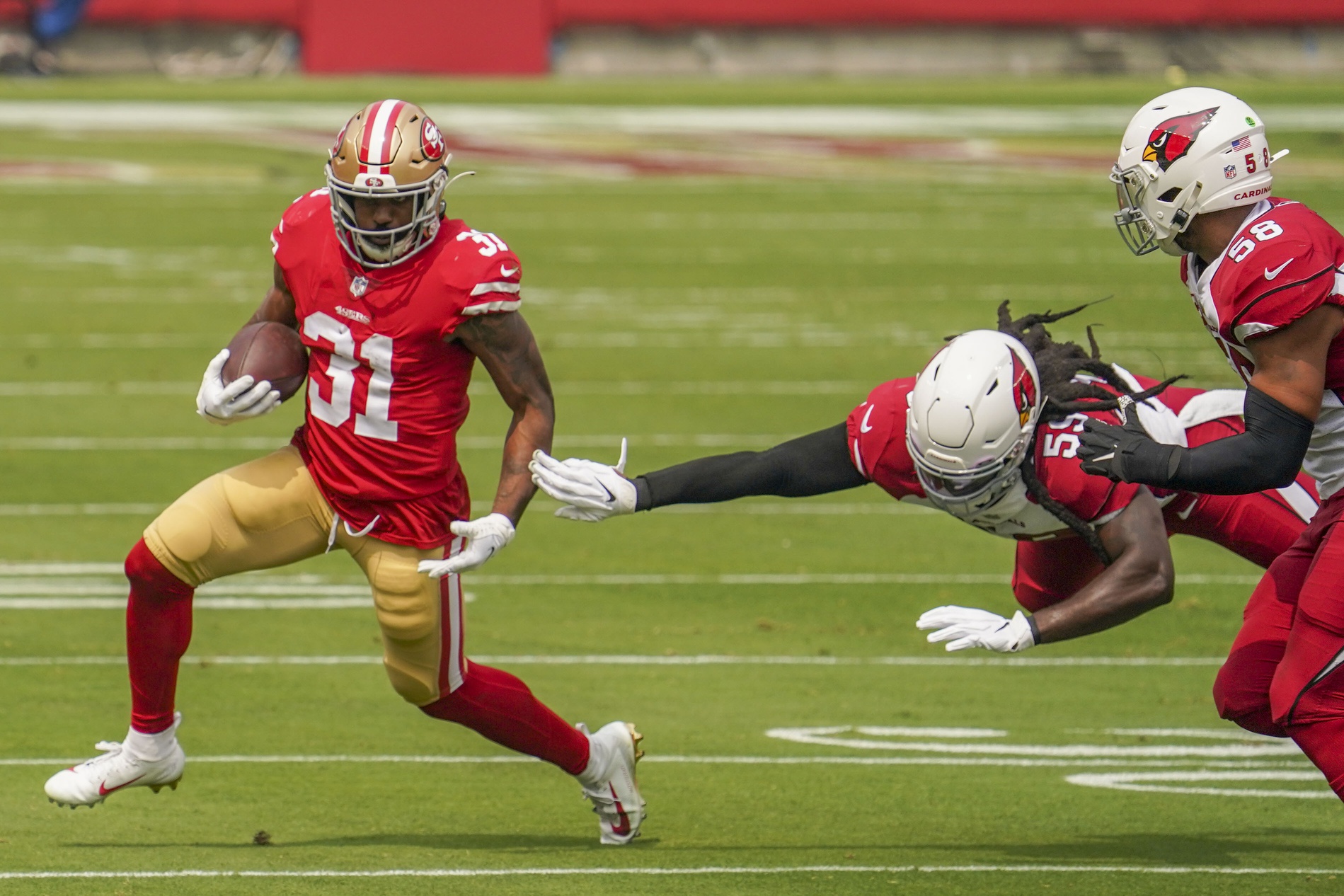
DeAndre Hopkins saw an insane target share in Week 1 (46%), pretty much squashing the idea that he won't see the same high usage he saw in Houston. Part of his volume could be attributed to the fact that the Cardinals did't use four-wide receiver sets as often as they did last season — they ran 10 personnel on just 14.15% of their plays. Last season they were at 32%.
After averaging four targets per game last season with Arizona, Kenyan Drake saw only two targets in Week 1. Backup running back Chase Edmonds had five targets.
Five San Francisco 49ers players saw five targets in Week 1: Kendrick Bourne, Trent Taylor, George Kittle, Raheem Mostert and Jerick McKinnon. Bourne led the team in routes and Mostert had the most receiving yards thanks to an early 76-yard toss he took to the house. In the backfield, Mostert led the way with 15 rushing attempts, but McKinnon saw three carries and two receptions inside the red zone.
New Orleans Saints 34, Tampa Bay Buccaneers 23
Ronald Jones was the clear-cut No. 1 running back and led all Tampa RBs with 19 touches, which was more than three times the workload Leonard Fournette (6). Jones also saw all the carries inside the 20-yard line.
Scotty Miller emerged as the No. 3 wide receiver option on the Buccaneers, finishing with the second-most receiving yards and the third-most routes run on the day.
The Bucs held Michael Thomas in check to the tune of three receptions for 17 yards. This is not the same defense that last season’s season-long numbers suggest is weak. The Buccaneers are a poor matchup moving forward — they have three-straight games of solid DST play and poor fantasy numbers for opposing quarterbacks dating back to last year.
Latavius Murray had more carries than Alvin Kamara (15 vs. 12) but only saw one target in the passing game. Kamara only rushed for 1.3 yards per attempt.
Los Angeles Rams 20, Dallas Cowboys 17
Amari Cooper led all Dallas receivers in Week 1 with 13 targets and 10 receptions despite the tough matchup against cornerback Jalen Ramsey. Rookie wideout CeeDee Lamb ranked second on the team in targets (seven) and receptions (five).
Malcolm Brown (18) and Cam Akers (14) saw a pretty even split in terms of carries, but Brown continues to operate as the entrenched goal-line back. He had two carries inside the 5-yard line and converted both into scores.
What was most surprising was Brown’s usage in the passing game. He had four targets and ran more routes than any of the other running backs or rookie wide receiver Van Jefferson.
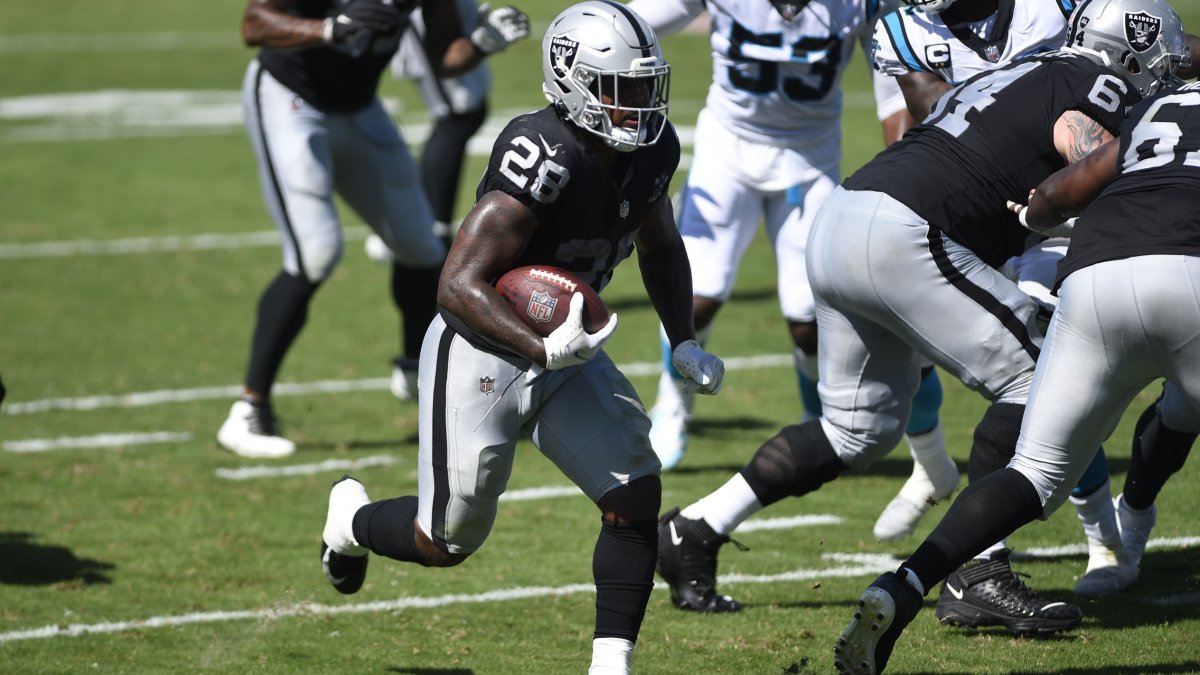


 © 2024 PFF - all rights reserved.
© 2024 PFF - all rights reserved.